WORLD TRAVEL NEWS ARTICLE
![]()
COLOMBIA
In the northwest of the South American continent, Colombia faces towards both the Pacific Ocean and the Caribbean Sea, connected in the west with the isthmus of Panama and bordering Venezuela and Brazil in the east and Ecuador and Peru in the south. The islands of San Andrés, Providencia and Santa Catalina belong to Colombia and are cruise ship destinations.
Hot on the coastal plains, cold in the Andean highlands and lushly tropical in the south where Colombia sits on the Equator, the variety in the country’s climate is considerable according to altitude.
Variety is evident not only in the weather. There are distinct differences in lifestyle, music, dialect and language, and in the food from region to region, with one exception – everywhere you go, you will see people drinking coffee, the national drink and the country’s greatest export commodity. And you will see happy, friendly people everywhere (despite the less than welcoming activities of some referred to previously) in this most scenic country.
The currency of Colombia is the Colombian Peso, divided into 100 centavos. For the latest exchange rates, visit www.xe.com
Colombia’s El Dorado International Airport is based within the capital Bogotá, and there is public transport between the airport and the city, and a link for motorists via Calle 26 from Avenida El Dorado. It is a huge airport but you could be pardoned for believing that it stretches even further than it does, as it is close to miles of glasshouses where flowers are grown for export. For current visa requirements, visit www.projectvisa.com
At 2,650 metres (8,700 feet), Bogotá enjoys a more formal, culturally aware life than those cities at sea level. Hidden in cloud from the Andes most of the time, even when it is not Bogotá is smog-laden due to the traffic being regularly brought to a standstill and thus releasing fumes. More than 90% of the 45 million inhabitants of Colombia live in Bogotá, Medellin or Cali – the three biggest of its cities, all of which occupy the Central Region.
To get a bird’s-eye view of Bogotá, take the cable car to the top of Cerro de Montserrate. There’s nothing like seeing a city from aloft and it is quite easy to establish where you are since it has a US-style grid system of roads. The panorama will present a fair amount of glass and steel, but you will also see traditional colonial Spanish buildings and even English-style mansions. It is worth stopping halfway from the summit to visit the Quinta de Bolivar – Simon Bolivar’s former home and gardens.
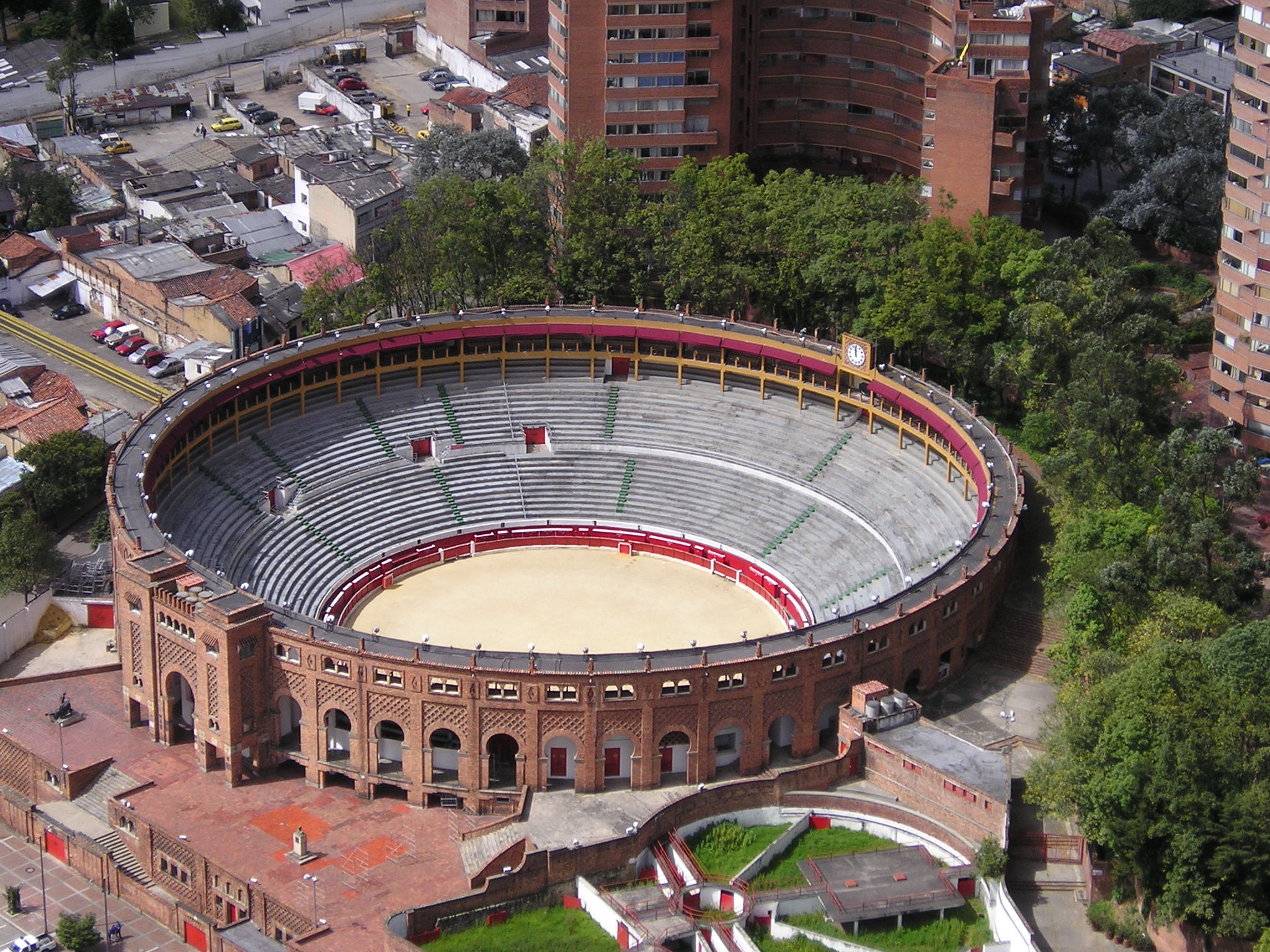
Plaza de Toros - La Santa Maria - Bogotá
Down at ground level once more, note that the ‘calles’ go from west to east and the ‘carreras’ from north to south, and coupled with your orientation from the heights of Cerro de Montserrate, you should be equipped to venture forth.
Start in the centre of the old city, in Plaza de Bolivar. ‘Must sees’ are the cathedral, the theatre and the gold museum (which covers several floors). You could also take in the changing of the guard outside Casa de Narino, where the soldiers in their silver spike-topped helmets wear uniforms based on First World War Prussian uniforms.
Every two years, the Ibero-American Theatre Festival is held in Bogotá. The intellectual buzz is tremendous amongst citizens who consider themselves to be the best in the country: the greatest artists, the most thought-provoking scholars, and the most cosmopolitan of people in their outlook. That generalisation does of course overlook the vast numbers of people belonging to the group on the other side of the coin: the beggars, the orphans and the homeless, who are more likely to sleep under the doorstep of the art gallery or bookshop, than ever to step inside.
To see samples of Colombia’s best, a visit to the west of the city and the National Botanical Gardens will reward you with many happy hours. If you are willing to travel further afield, the underground Salt Cathedral of Zipaquirá is well worth going to see, but be prepared for the fact that un-mined salt is black!
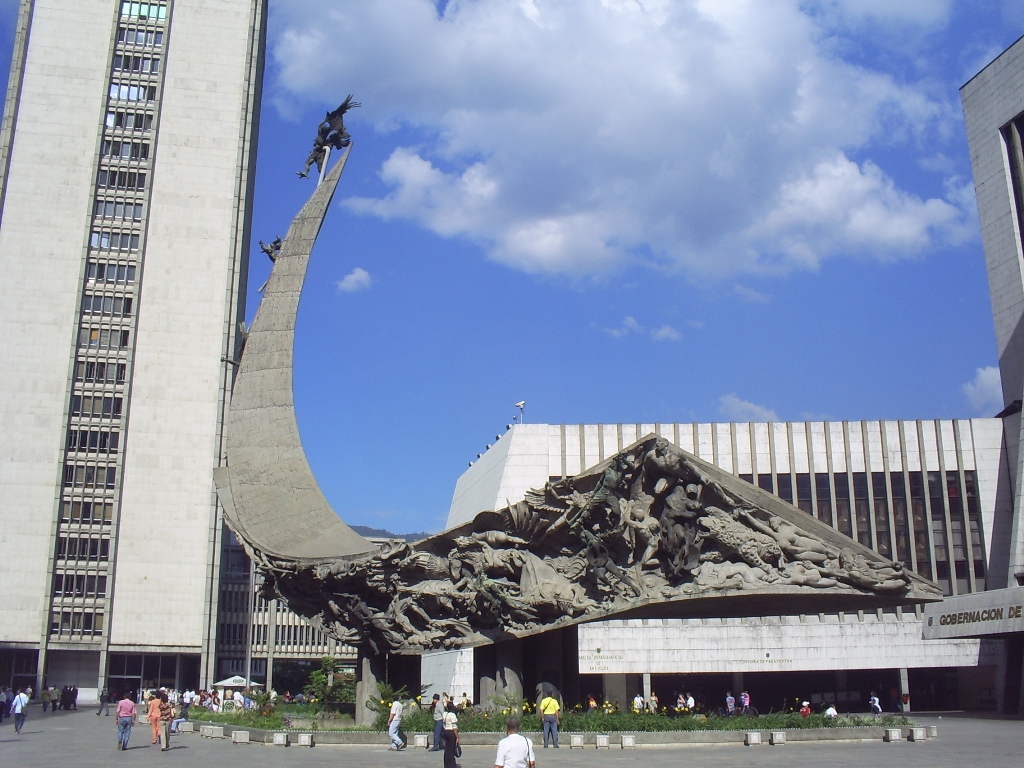
La Raza de Rodrigo Arenas Betancur - Medellin
Medellín is Colombia’s second city, 400 kilometres (250 miles) northwest of Bogotá, and is nicknamed the ‘City of Eternal Spring’. At 600 metres (2,000 feet ) lower than Bogotá, Medellín is correspondingly less formal and it is also much more modern – there is no antiquity here. The art and sculptures of Fernando Botero, in Parque San Antonio, deserve seeing. If it is olde-worlde charm you seek, travel to colonial Santa Fe de Antioquia, a town which is well preserved against its backdrop of hillsides.
Trekking is on offer in Parque Nacional Los Nevados – dense and lush vegetation, topped with Volcan Nevado del Ruiz (which has behaved impeccably since its last ferocious display in 1985).
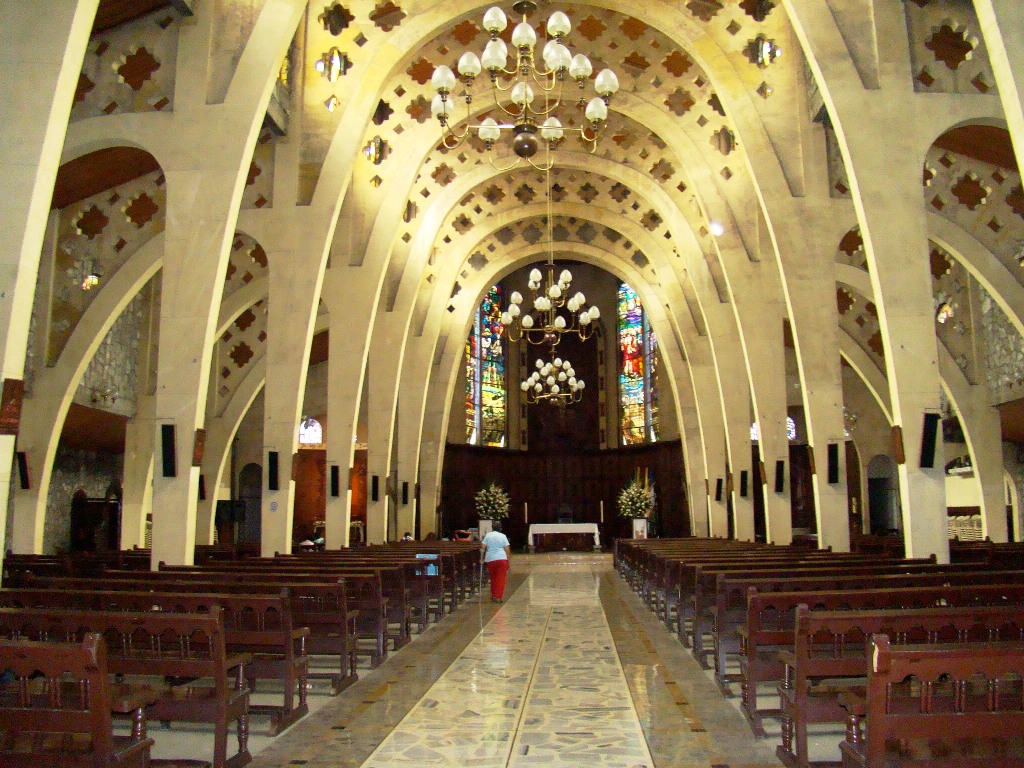
San Fernando - Cali
Lower even than Medellín, Cali is the third city of Colombia, and again this is somewhere historic buildings are few and far between. Cali came into its own during the sugar-cane boom and with the arrival of the railway, and it comprises mainly high-rises, broken intermittently with colonial churches and with palm trees in the plazas.
Excursions are offered here into the countryside, to visit and sample life on a sugar plantation.
If you are a salsa aficionado, then from Cali you should head northwest to Buenaventura, from which so many salsa musicians have come from. It is only a small place, but if it’s salsa you want, then the nightlife here is for you.
Popayan, even lower, is where you can see masterpieces of whitewashed Spanish colonial architecture. Or can you? In fact, the 1983 earthquake wiped out Popayan, and what you see today is the careful restoration of the lost former colonial treasures – the great white cathedral is sublime. The colourful local market here is worth visiting.
Popayan forms part of the ‘Coffee Triangle’ and enjoys luxuriant foliage, bamboo, strelitzia, seemingly endless vivid blue sky, and tropical birds and flowers. Go out to explore Parque Nacional Purace with its volcanoes, lakes, waterfalls and thermal springs.
Another excursion will take you to Valle de Cocora near Salento, where you will see specimens of palma de cera, Colombia’s national tree. Growing up to 60 metres (200 feet) high, from a distance they look as though they are straight out of Jurassic Park!
Curiosity alone may take you to view the mysterious stone figures of San Agustin, especially if you have seen ancient stone-carved figures in other parts of the world. In all, there are some five hundred or so in the Magdalena Valley but none of the experts seems too sure about their origin. Dates range between 6th and 12th centuries but what they were for appears to be anyone’s guess.
Going back to Bogotá now, so as to head north and on to the Caribbean, you will travel through wildly dramatic scenery along the Cordillera Oriental mountain range to Tunja. Here, in what Bolivar called his “liberty base”, you will see evidence of the wealth of that time (when the fashionable crowd followed him) in the number and richness of the churches – if you are a lover of religious art then don’t miss a visit here. Tunja is a very useful place from which to foray out in the Boyacá highlands on explorations. Visit, too, the cobbled village of Villa de Leyva – the whole village is a national monument.
Santa Marta on the Caribbean coast takes you into a wholly different, modern world. It’s a tourist’s dream – they come here for the sun, the salsa, the pavement café life and the evening paseo, and for Tairona’s white sand beaches.
From Santa Marta you can take an excursion to the pink flamingo reservation. And if you have a couple of weeks to spare, you can take the arduous six-day hike out to see the ancient Lost City of the Tairona – larger even than Machu Picchu – which was found in 1975.
A pilgrimage of a different sort is to Aracataca, where in 1928 Gabriel Garcia Marquez was born and where he grew up. Aracataca is the ‘Macondo’ of Marquez’s One Hundred Years of Solitude, written in 1967.
Cartagena de Indias is a World Heritage Site and historic port. This is Colombia’s best example of a colonial-style city – Afro-Caribbean influence coupled with Spanish architecture in one of Earth’s most beautiful natural locations. You are spoiled for choice whatever you go to see here. As the entire city is a World Heritage Site, it can’t be right to single out just one place; do, however, go and look at the Church of St Peter Claver, a priest who devoted his life to the care of African slaves and was canonised thereafter – he was the first saint on the continent.
The island Fort of San Fernando is extremely well preserved, and indeed all the Spanish fortifications and fortresses take you back to the days when they were built to beat back bloodthirsty pirates, and then, when these measures proved successful in withstanding raids, secure keeps were built to house the gold. Go up to San Lorenzo Hill to explore the castle and at the same time to take in a stunning view over the old city.
For information about weather conditions, visit www.worldweather.org
You may also like to read
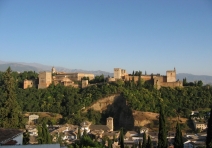
SPAIN - A COUNTRY OVERVIEW
As Tour-smart shows, there much more to Spain than sun and glorious beaches.
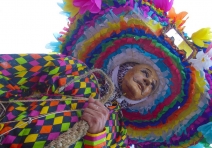
MEXICO - Central America
Tour-smart takes you to Mexico for holidays on the two oceans of Central America.
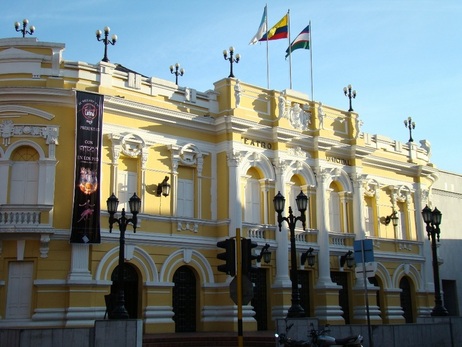
Comments